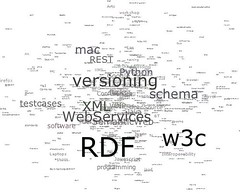This is my second post about backward compatibility in software, the first one was dealing with the project management aspect of software compatibility, this one talks about bugs and how, sometimes, correcting a bug can break compatibility.
First of all, coming back to my previous post on the subject, deciding whether or not to break the backward compatibility of an application is a project management matter. The decision that correcting a bug will break compatibility must not be left solely to the developer, sometimes the company may decide that compatibility should be preserved even when it comes to bugs.
Raymond Chen, a well-known developer at Microsoft, has some good examples on his blog, The Old New Thing, to illustrate this. Raymond actually gives us a good insight at Microsoft policy concerning backward compatibility of its OS.
This post, from Joel Spolsky (another well-known ex-employee of MS) gives another good example with this leap-year-bug deliberately created for Excel/1-2-3 compatibility.
So, to make it short, when you correct a bug, incompatibilities can appear because:
- Either the bug as been detected and a workaround as been put in place. This workaround will have to be removed once the bug is corrected.
- Or this was not initially considered a bug and the behavior is going to unexpectedly change.
As an example, if an interface exchanges strings representing date and time and you later discover that the time zone is omitted from the format. If someone developed a parser for this date and time but never expected a time zone information, then the application will break. This is a semantic incompatibility, but one that is brought by a bug fix.
In the case where your management decided that bug for bug compatibility was not necessary, the incompatibility and its potential impacts should be documented in the migration release notes.
In the case where you have to maintain the bug to maintain the compatibility, I recommend you subscribe to Raymond Chen’s blog or stop writing bugs.

 The Project Manager is a human
The Project Manager is a human 